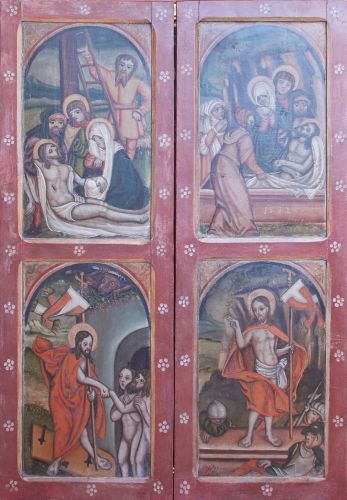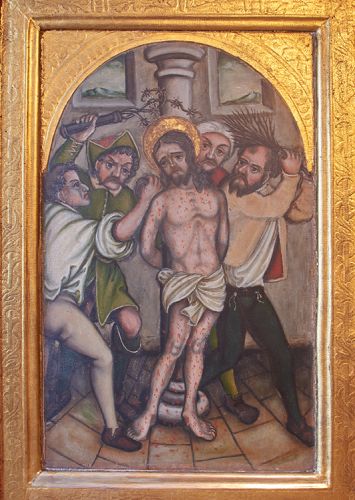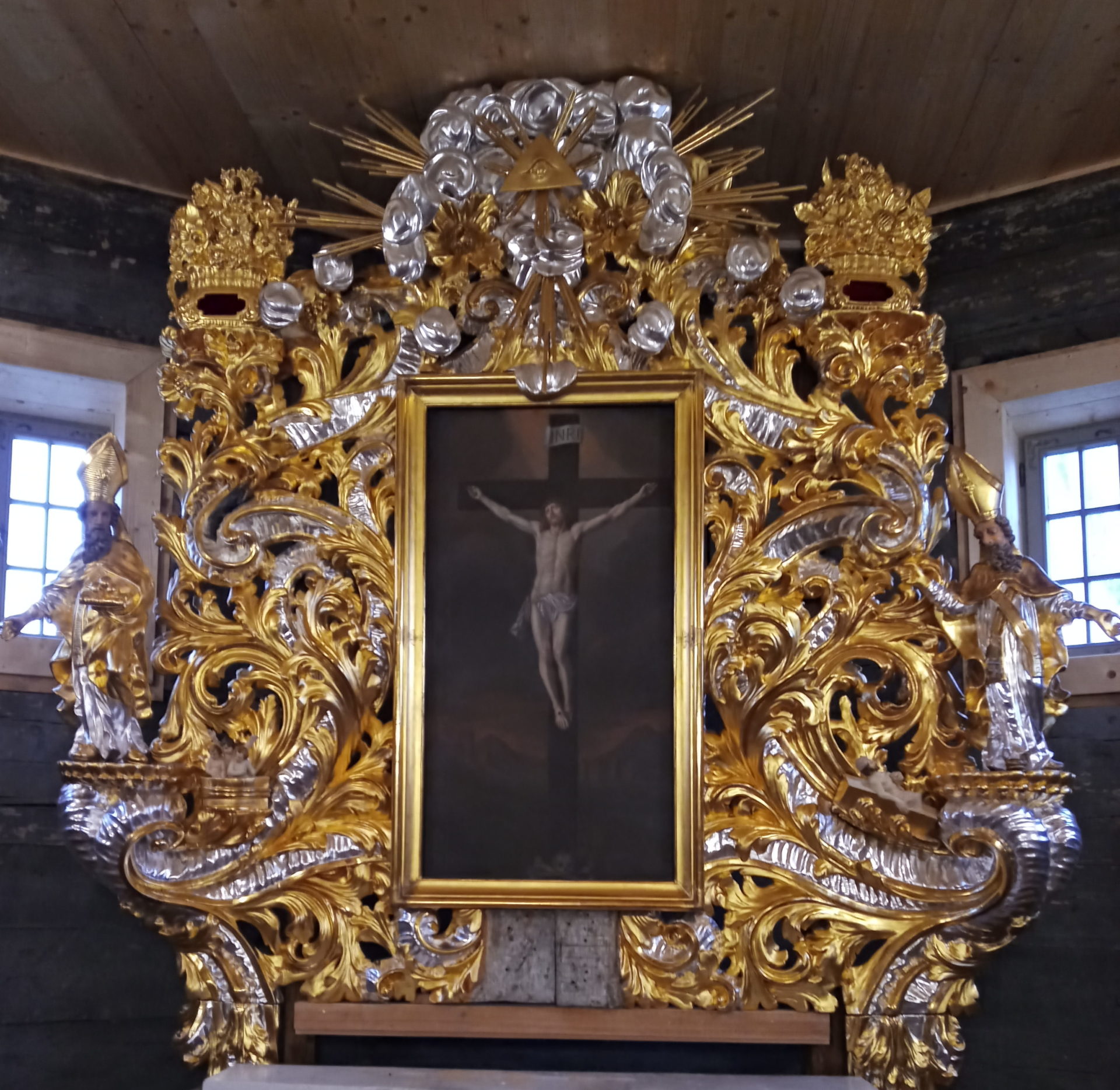
MŁODOJEWO: church of St. Nicholas
Date of construction: 1780 (?)Monuments
A story about the passion and resurection
The triptych from St. Nicholas church in Młodojewo is an outstanding and unique work of art. The name means that it consists of three main elements: the central one with the painting of Christ crucified and side movable wings covered on both sides with paint decorations. Usually the triptych is opened, apart from Easter period when the wings are closed to present the scenes connected with Resurrection.

The triptych was created in 1581-1582 (dates are put in different places of the painting).
The main painting is the scene of “The Crucifixion of Christ” with two thieves.
Top of the altar: veraikon – an image of Christ on a piece of cloth and farewell of Christ with His Mother Before the Torment (a scene not identified completely)
The left wing: Ecce Homo and flagellation
The right wing: fall Before the Cross and the Crowning with Thorns


The triptych is not a common painting that depicts the Crucifixion. Its artistic style connects two epochs: late Middle Ages and the Renaissance. The form of the triptych is typical for the late Gothic and also the way the figures were painted and their styling were created in the Gothic aesthetics. However, the landscape in the background, the use of perspective, Mary Magdalene’s and the horseman’s robes are Renaissance elements. Presumably, those figures are the founders. Additionally, the depiction of the founders in the same size as the rest of the figures in the painting is an innovation (in comparison to Gothic).
Unusual is also the way of presenting scenes of the Passion of Christ as a story, a tale with a message told by an anonymous artist. Through his work, the artist engages the viewer in a dialogue by including symbolic content and by referring to the viewer’s erudition, knowledge and sensitivity (eg. dates, the figures of thieves, skulls). The works displays the artist’s expression and skills, but it also conveys history – the obvious, mainstream one and the symbolic one found between brushstrokes. Undoubtedly, the divine spark had given the artist his talent thanks to which a mere piece of wooden plank turned into extraordinary work of art.


Pensive Christ
The sculpture shows Christ who is sitting and contemplating, with his head supported by a hand. Some read this depiction as a figure of Christ waiting for crucifixion just after the torment, to which the Crown of Thorns and the marks of flagellation indicate. Another, more general interpretation states that this is a symbolic summary of the whole Passion.
The figure of Pensive Christ was made in the Gothic style from wood almost 500 years ago.
Pensive Christ image is first and foremost a depiction of human nature of God deprived of supernatural perfection who is sad and lost in thought over the cruelty of men. The iconography had become common in folk art – sculptures were put in small chapels by country roads which served for local, folk religious practices. In the old days, Pensive Christ was a commonplace element of the countryside.

The conqueror of death
The figure of Christ Victorious is present in every catholic church. The one form Młodojewo is special because it is almost 400 years old. Not very big, just around 70 cm tall, the figure of Christ was shown with the right hand raised while giving blessings. The Savior is wearing a red cloak, which used to symbolize slander, and after the victorious resurrection became the symbol of Christ’s martyrdom. Additional element which emphasizes the divine reign is the crown of Christ’s head and which indicates the rule of God on earth.
“The Lord is resurrected, the heaven sounds with victorious glory.
Who like Him shines so majestically”
Easter song

The richness of details

The main altar was made in the Late-baroque style in the first half of the 18th century. This period of art is characterized by enormous grandeur of the altar, the excess of forms and overabundance of details. Especially
intriguing are two of them, sculptured in the form of elaborate vases and put on the altar’s frames. Presumably these are reliquaries used to keep holy relics because they have a small window in the wall. The place where they were put is untypical because they were exposed in the altar’s crowning, on the sides of God’s Providence. The symbol of God’s intercession surrounded by gold flames and clouds is the symbol of faith, it highlights the fact that God watches over the faithful. The divine “sight” exposes the presence of the All-seer where the man finds safety and support. There are statues on sides: St. Nicolas with gold orbs and St. Stanislaus with resurrected Piotrowin.

